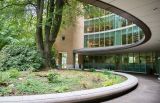A research team led by the University of Tennessee Knoxville has received a $9.9 million grant from NASA. The funds will be used for the development of a more aerodynamically capable aircraft.
The award was announced earlier this month. According to The Knoxville News Sentinel, it is part of an overall $50 million investment that NASA is granting to university research teams that are studying aviation innovation.
It was reported that the UT-led team will focus particularly on creating a more aerodynamic airplane wing with the goal of reducing energy use. It is also expected to lead to more efficient aircrafts, Jim Coder said. He is the lead researcher of the project and is an assistant professor in the department of mechanical, aerospace and biomechanical engineering at UT.
He noted that the impact of their research would lead to the production of a much more efficient aircraft wing. Their goal is to have ultra-efficient commercial vehicles and reduce the carbon footprint of the aircraft fleet.
The research is expected to take place over the next five years. The team will explore whether a slotted wing can reduce drag, control shock waves at high speeds and give extra lift at low speeds.
Aviation Pros reported that other contributors to the team are from Penn State University, Texas A&M University, the University of Illinois Urbana-Champaign, Old Dominion University and the University of Wyoming. Two aviation companies, Boeing Corporation and Airfoils Inc., are also contributing to the research.
It was not specified which research topics or disciplines should be explored in the grant application with NASA. Universities were instead asked to create their own topics with the most compelling investigations as long as the technical challenge addressed one of the agency's main aviation research goals.
In its official website, the University of Tennessee Knoxville noted that the goal of the collaboration is to provide breakthroughs that will reshape aviation by improving flight dynamics, communications, speed and propulsion. Advancements are expected to make changes to the design, cost effectiveness, safety and reliability of aircrafts.
© 2025 University Herald, All rights reserved. Do not reproduce without permission.








